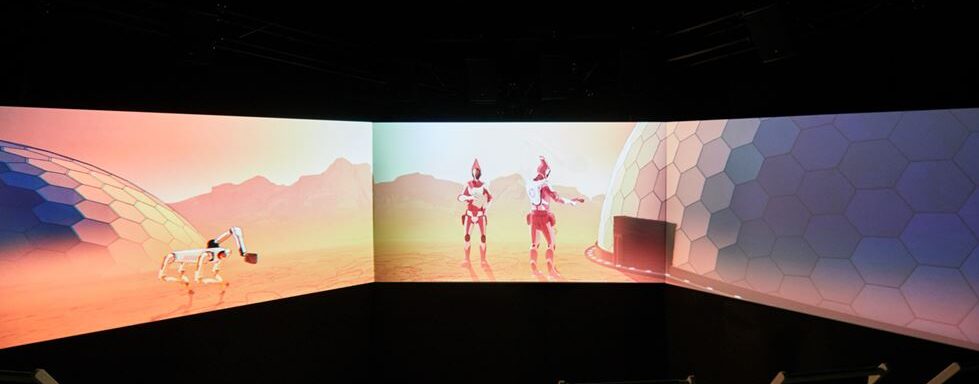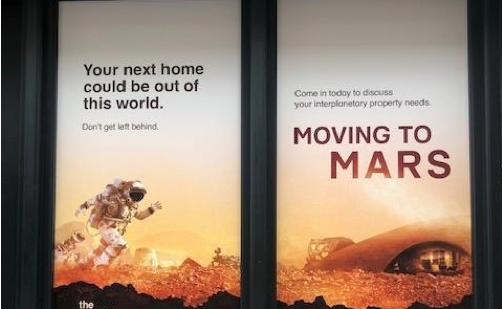- What We Do
- Understanding your audience
- Engaging new audiences
- Designing experiences
- Building loyalty
 Case studies
Case studiesDesign Museum - Moving to Mars
“With limited resources and time to plan and deliver what was going to be the most immersive experience at the museum to date, we sought help to identify which stories mattered most to audiences.”
Matteo Plachesi, Head of Marketing and Communications, Design Museum
Insight-driven exhibition planning
The Design Museum had bold plans for their exhibition programme. The possibilities of exploring design are endless and the Design Museum’s vision was to push the boundaries of what audiences might expect.
In 2018, MHM partnered with the Design Museum to test four potential exhibition ideas, including one focused on space exploration, specifically Mars.

We had three overall objectives for each exhibition idea:
- Identify the size the market so that the Design Museum could confidently set targets and plan
- Identify which Culture Segments each exhibition would most appeal to and their needs
- Assess the best way to position (and deliver) the exhibitions to attract and satisfy those segments
We took a combined qualitative and quantitative approach:
- Six focus groups with current and potential Design Museum audiences in three key Culture Segments (Essence, Expression, Stimulation) to test the initial ideas and explore what elements most excited visitors;
- A representative population survey of London and South East paid-exhibition attenders to size the market, test images, titles and more detailed propositions.
Moving to Mars
After the initial focus groups, there was clear interest in Mars as a topic, with a particular desire to feel transported.
The title ‘Moving to Mars’ quickly emerged and proved popular in the quantitative testing.
The Stimulation segment – a clear priority to target –particularly liked this concept for offering something they hadn’t seen before.
“It will give me an experience of being on Mars while not leaving London.” – Stimulation
This insight inspired the Design Museum’s clever marketing campaign (which got an honourable mention at the 10th Lovie Awards in the Best Integrated Campaign category): presenting an opportunity to relocate to Mars with the Museum as an intergalactic estate agent.
Audiences had high expectations the exhibition would be an immersive experience.
The research demonstrated the need to balance fact and fantasy – the Museum has to capture the audience’s imagination but still ground the exhibition in their unique expertise.
Expression – the second key segment – wanted to see the real, human experience of space travel.
“Interesting mix of science and art, like science fiction.” – Expression
This led the Design Museum to increase its interactive and sensory experiences – such as a on Mars simulation room with film, floor surface and smells – while still leading the exhibition with design to show the human side of space travel – such as a recreation of astronaut living space; or how colonising the Red Planet meant rethinking every aspect of daily life, helping us design a zero-waste, clean energy future on Earth.
An ‘out of this world’ success
Moving to Mars opened October 2019 to great reviews and high visit numbers.
“The Mars Exhibition showed me how design can improve life for humanity.” – Expression
The Museum bested our 75,000 visits estimate, with 82,000 visitors over the four-month exhibition run.
It was the Design Museum’s most-attended thematic exhibition, and its third most successful exhibition on record.
And the success was also reflected in audience research: 80% gave the exhibition 8 or higher out of 10 in terms of overall experience.
The high visit figures were driven by Design Museum’s two target segments for the exhibition: 39% of visits were made by Expression; 25% Stimulation.
“The research transformed our approach to family audiences and helped us build a fun integrated campaign that ultimately paid off, both in terms of engagement and return on investment.”
Matteo Plachesi, Head of Marketing and Communications, Design Museum
- Engaging new audiences
- Understanding your audience
